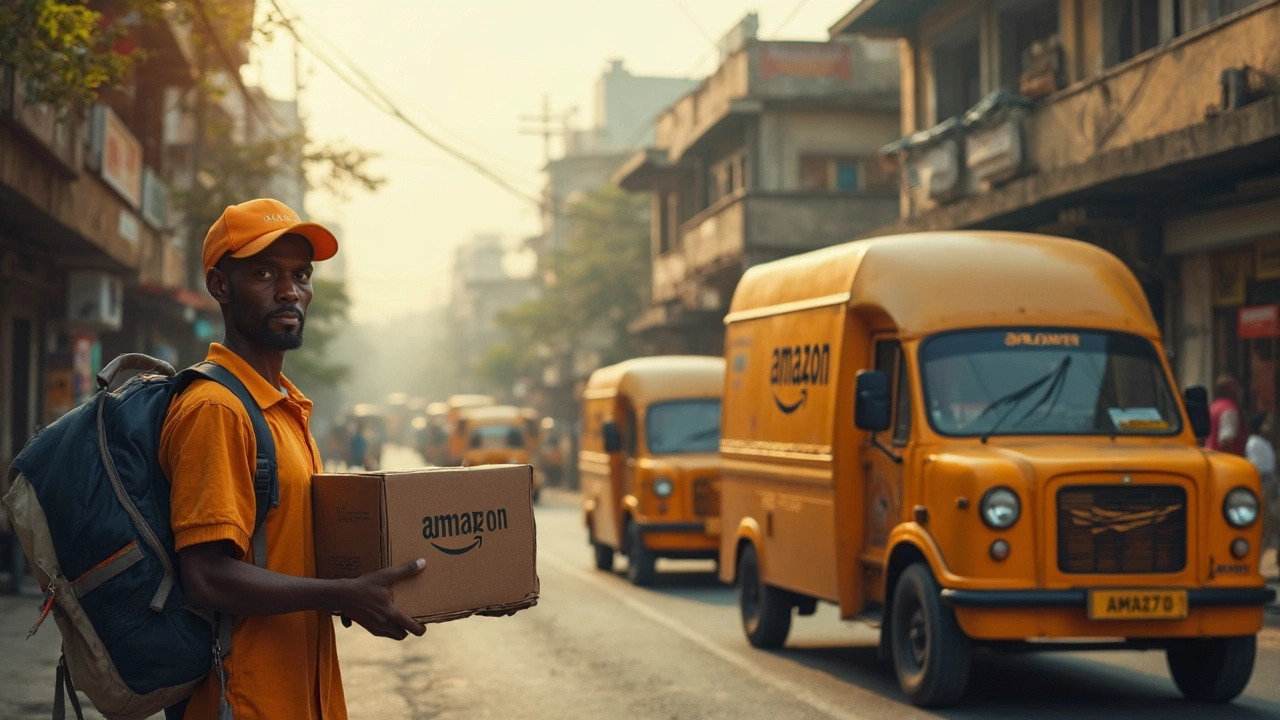Amazon Last Mile Delivery: What It Means and Why It Matters
If you’ve ever waited for an Amazon package, you’ve experienced last‑mile delivery – the final leg that brings the parcel to your doorstep. It’s the part of the supply chain that customers see, and it’s where speed, reliability, and cost are judged. For sellers, understanding this step can help you meet Amazon’s performance standards and keep buyers happy.
How Amazon’s Last Mile System Operates
Amazon uses a mix of its own vans, independent contractors (Amazon Flex), and partner carriers. When an order is placed, the nearest fulfillment center packs the item, then a routing algorithm decides the fastest carrier based on distance, traffic, and delivery windows. The package is scanned at each checkpoint – from the warehouse to the local sort hub, then onto the delivery vehicle – giving you real‑time tracking updates. This digital trail lets Amazon spot delays early and re‑route if needed.
One key advantage is Amazon’s dense network of micro‑fulfillment centers. These small, city‑based warehouses keep inventory close to shoppers, cutting the distance the last mile has to travel. The result? Same‑day or one‑day delivery becomes feasible even in crowded urban areas.
Practical Tips for Sellers and Shoppers
For sellers: Keep your inventory stocked in Amazon’s fulfillment centers. A well‑filled warehouse reduces the chance of a “stockout” that forces the order to fall back on slower, third‑party shipping. Also, monitor your Order Defect Rate (ODR) – a high ODR can trigger stricter delivery timelines or even account suspensions.
For shoppers: Choose the delivery window that fits your schedule. Selecting a “no‑rush” option can lower shipping costs, while “prime now” guarantees the fastest service. If you live in an apartment building, consider setting a secure drop‑off location in the app to avoid missed deliveries.
Both sides benefit from accurate address information. A missing apartment number or an outdated street name can send a driver on a wild goose chase, adding hours to the delivery time. Double‑check the details before you hit “place order.”
Another tip is to use Amazon’s “Delivery Instructions” field. Let the driver know if you have a side gate, a preferred neighbor to receive packages, or a safe place on the porch. Small notes like these can be the difference between a successful drop‑off and a missed attempt.
Finally, watch the tracking page. If a package is marked as “out for delivery” and you’re not home, you can often reroute to a nearby locker or Amazon Hub. This flexibility saves you a trip to the post office and speeds up the overall process.
Understanding the mechanics behind Amazon’s last mile delivery helps you set realistic expectations and take actions that improve the experience. Whether you’re a seller aiming for high performance metrics or a buyer wanting that coveted one‑day arrival, the key is clear communication, accurate data, and using the tools Amazon provides. With those basics covered, you’ll see fewer missed deliveries and more happy moments when that “Your package has arrived” notification pops up.
Understanding Amazon Last Mile Delivery: What You Need to Know
Amazon's last mile delivery is the final leg of the delivery process, taking packages from a distribution center to the customer's doorstep. This phase is crucial as it directly impacts customer satisfaction. The article explores how Amazon efficiently manages this process, the technology involved, and provides tips for consumers to optimize their delivery experience.
Read More